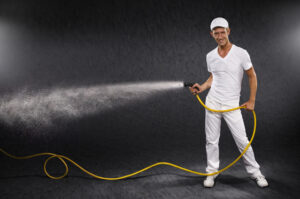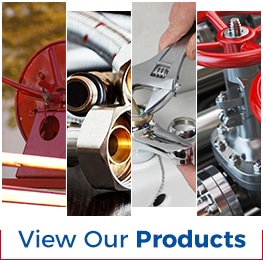
Let’s face it, it’s easy to commit to a product and opt to purchase it. Spending money and making a product ours is the easy part. The hard part, however, is making sure that product stays in top-notch condition over the years. Sure, it’s easier said than done. But that doesn’t take away the fact that it’s critical that we go the extra mile to maintain the things we buy.
Industrial hoses are no different. They might seem like they’ll hold up just fine over the course of time. However, we can’t take that for granted. Even with moderate use, just a few years can put a great deal of wear and tear on a hose. We can ensure our hoses will last a little longer, though, if we care for them in the best ways possible. Below are some tips on how to do just that. You’ll appreciate how these little maintenance tricks will help you upkeep your hoses for longer and keep you safer on the job in doing so.
Check Your Hose Before Each Use
There’s always that possibility that your hose could fail on you during use. Your hose doesn’t discriminate; your hose could only be a year or two old, and it might fail during a mild, calm day during an urgent work task. No matter what the situation is, where you are, or the type of hose you have, your hose might not hold up one day and might just burst.
To avoid dangerous hose failure, it’s imperative to check your hose before using it. Look for any kinks, cuts, bulges, or other abnormalities in or on your hose. If it looks alarming, never use it or try to “fix” it.
Perform Regular Hose Tests
A quick visual inspection prior to using your hose isn’t enough. You’re also going to want to perform regular hose tests to make sure the pressure and overall performance of your hose is in top notch condition. Like with visual examination, regular hose tests can help you feel more confident that your hose won’t suddenly fail on you.
Be Careful with How You Handle Your Hose
How you handle your hose says a lot. Abuse in the form of constantly pulling your hose around corners, trying to “lengthen” your too-short hose by yanking it as much as you can to get your hose where you need it to be, and failing to unravel your hose when It gets tangled up can set your hose up for failure.
Store Your Hose Correctly
Correct hose storage involves properly coiling up your hose and placing it in an environment that isn’t going to set it up for damage. Avoid areas that are super sunny, too hot or too cold, or are near pests like mice or rats. Properly stored hoses can last much longer than hoses that are stored in the wrong environment or even left out in the elements.
Even if your current industrial hose doesn’t seem in best of shape, it’s not too late to get the proper equipment. Need a new Continental hose? Contact ASJ Hose & Fittings now at (951) 735-1351.



 Phone:
Phone: